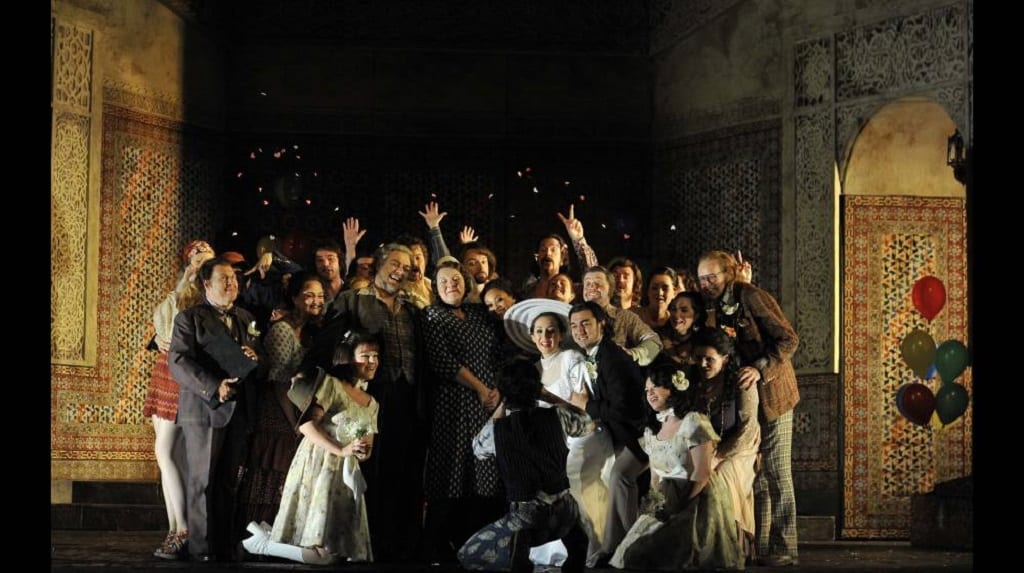Mozart’s Marriage of Figaro returns to the Sussex opera house in the production first put together by director Michael Grandage in 2012. It has lost none of its original charm in this 2016 version thanks to some fine performances by the new cast. I confess to having loved this opera for nearly fifty years now and I find that each good production illuminates an aspect of it in a fresh way. Here the comedy sparkles but the atmosphere of farce does obscure the underlying political bite and even, on occasion, distracts from Mozart’s sublime music. But it is a work of such overwhelming and complex musical and dramatic beauty that the perfect version, combining all the elements in equal measure, is perhaps impossible.
The opera tells the tale of the wedding day of Figaro and Susanna, servants in the household of the lecherous Count Almaviva. Almaviva lusts after Susanna and the comedy develops around the ingenious efforts of the servant couple to thwart their master, to overcome other obstacles, and to embark on their married life unscathed. In this they are aided by the Countess who adores her husband despite everything and wishes to win back his love and loyalty. The opera is based on a play by French author Beaumarchais and it was, in its original form, a scathing attack on the ancien regime. Though toned down by Mozart and his brilliant librettist Da Ponte, it was somewhat surprising that Mozart got permission to put on the opera in Vienna for its first performance in 1786.
This version is set in a stately home in the 1960s. The count is a louche aristocrat – free love is his creed and marijuana appears to be his intoxicant of choice. He arrives on stage in a red sports car and he and the Countess look like the upper class hippies of the sixties – I was reminded of the Marquess of Bath and his ‘wifelets’. The sets are – apart from an unconvincing garden in the fourth act – striking and well considered and the look of the production is very stylish even down to the shoddy disco-dancing of the wedding scene.
The four principals are all great singers and do their best to inhabit the personas of the director’s vision. Golda Schultz is an entrancing Countess with a lovely voice and bags of on-stage charisma but the production forces her to play the clown. This means that the emotional impact of her beautifully sung Porgi Amor is shrunk and her unacknowledged feelings for the page, Cherubino, pass unmarked. The Count – again sung superbly by Gyula Orendt – is a figure of fun from the outset. There is no sense of aristocratic dignity undermined by foolish lust – so his rare moments of self-reflection have no emotional impact and his rages fail to convince.
Davide Luciano is a fine energetic Figaro, a risk taker who can improvise with panache when things begin to get out of control. Rosa Feola is a spiky and loveable Susanna, whose distaste for the Count and love for Figaro are well portrayed. Natalia Kawalek is an excellent Cherubino whose adolescent passion for any woman who crosses his path is by turns absurd and touching. Susan Bickley and Carlo Lepore provide fine cameos but the important scene where the true identity of Figaro’s parents is revealed is submerged in comic business and the sublime music which reveals that Mozart meant the scene to be both funny and moving misses the impact it should have.
Jonathan Cohen conjured some fine playing from the Orchestra of the Age of Enlightenment but I take the view that a modern orchestra does more for Mozart’s music. Some great moments were spoiled by out-of- tune violins and fluffed horn entries – rare blemishes but still irritating. The Marriage of Figaro deserves the best acting singing and playing – this performance was very enjoyable but just missed the heights.

